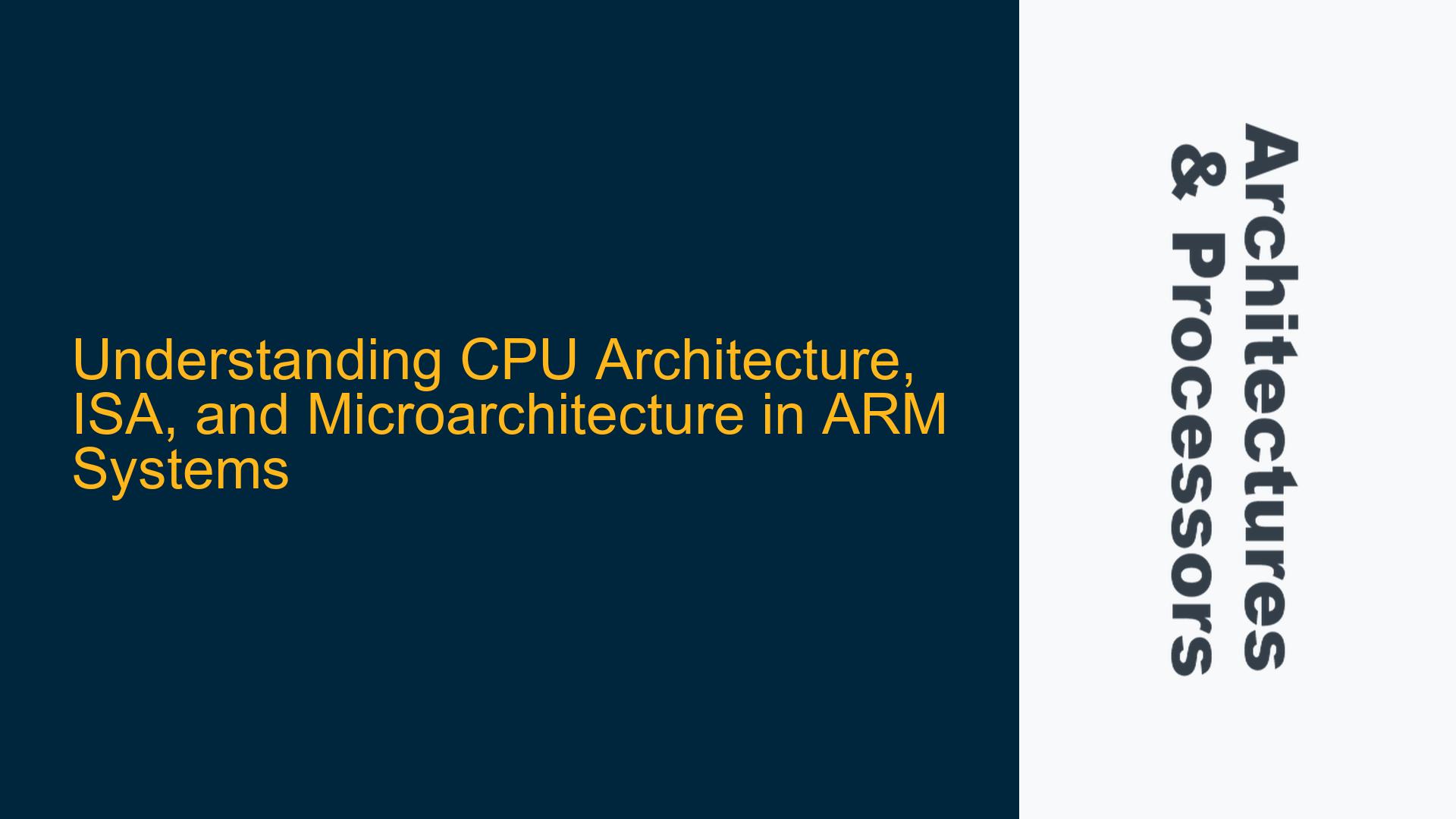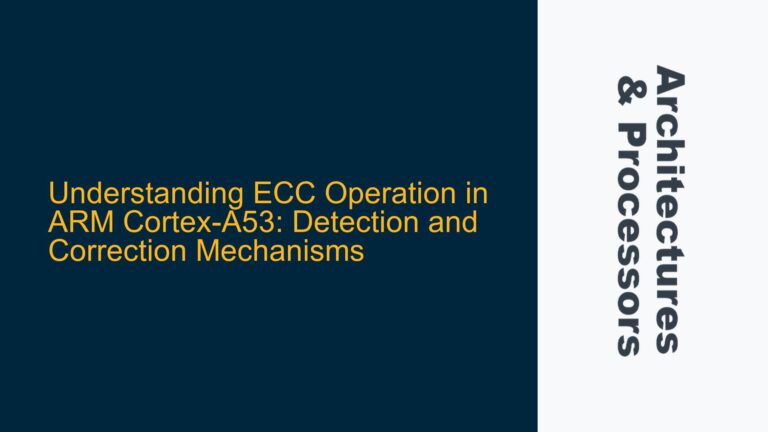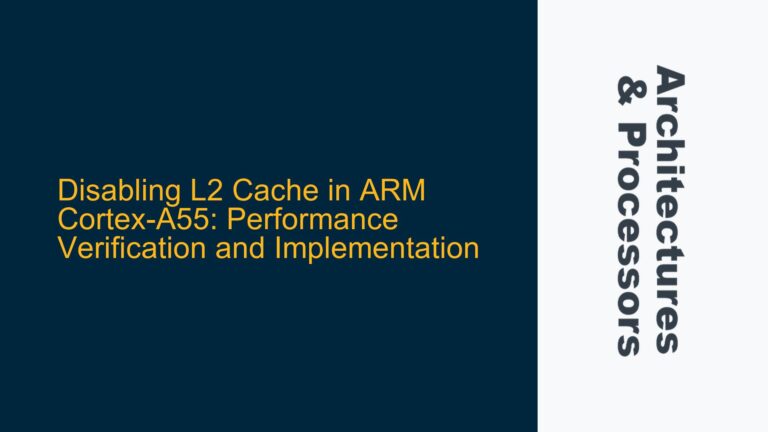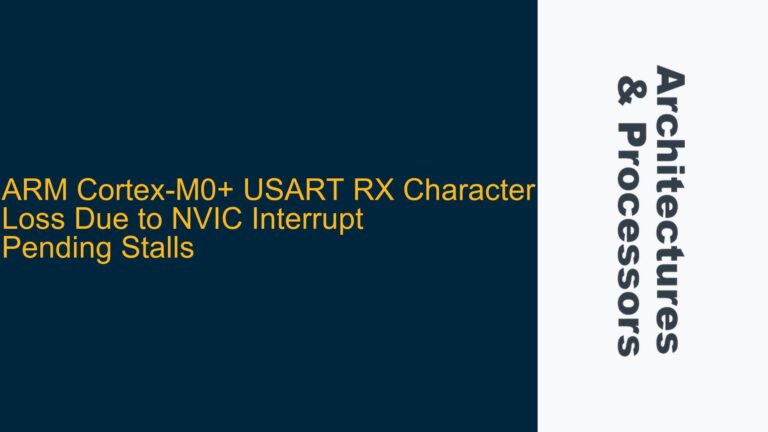CPU Architecture: Hardware Foundations and Functional Design
CPU architecture refers to the fundamental design and operational principles of a processor. It encompasses the hardware structure, including the data path, control units, memory hierarchy, and input/output mechanisms. In ARM systems, the CPU architecture defines how the processor executes instructions, manages memory, and handles exceptions. For instance, ARM architectures like ARMv7-M and ARMv8-M specify the behavior of the processor, including how it handles interrupts, manages stack frames, and performs arithmetic operations.
The architecture also defines the register set, addressing modes, and the overall organization of the processor. For example, ARM architectures typically include a set of general-purpose registers, a program counter (PC), a stack pointer (SP), and a link register (LR). These components are crucial for the execution of instructions and the management of program flow. The architecture also specifies how the processor interacts with peripherals and memory, including the use of memory-mapped I/O and direct memory access (DMA).
In ARM systems, the architecture is designed to be scalable and flexible, allowing for implementations that range from simple microcontrollers to complex application processors. This scalability is achieved through a modular design that allows for the inclusion or exclusion of certain features depending on the target application. For example, the ARMv7-M architecture, used in Cortex-M3 and Cortex-M4 processors, includes features like the Nested Vectored Interrupt Controller (NVIC) and the Memory Protection Unit (MPU), which are essential for real-time operating systems (RTOS) and safety-critical applications.
Instruction Set Architecture (ISA): The Software Interface to Hardware
The Instruction Set Architecture (ISA) is the interface between the hardware and the software. It defines the set of instructions that the processor can execute, the format of these instructions, and the effects they have on the processor’s state. In ARM systems, the ISA is designed to be efficient and easy to use, with a focus on reducing power consumption and improving performance.
The ARM ISA includes a variety of instruction types, including data processing instructions, memory access instructions, and control flow instructions. Data processing instructions include arithmetic operations like addition, subtraction, and multiplication, as well as logical operations like AND, OR, and XOR. Memory access instructions include load and store operations, which move data between memory and registers. Control flow instructions include branches, which change the program counter, and function calls, which save the return address in the link register.
The ARM ISA also includes support for conditional execution, which allows instructions to be executed only if certain conditions are met. This feature is particularly useful in reducing the number of branch instructions, which can improve performance and reduce power consumption. Additionally, the ARM ISA includes support for Thumb instructions, which are a compressed form of the standard ARM instructions. Thumb instructions are 16 bits wide, compared to the 32-bit width of standard ARM instructions, which allows for more efficient use of memory and can improve performance in systems with limited memory bandwidth.
The ISA is designed to be backward compatible, meaning that software written for older versions of the ARM ISA can run on newer processors without modification. This compatibility is achieved through the use of a consistent instruction set and a well-defined set of architectural features. For example, the ARMv7-M ISA, used in Cortex-M3 and Cortex-M4 processors, is a subset of the ARMv7-A ISA, used in Cortex-A series processors. This allows software written for Cortex-M processors to be easily ported to Cortex-A processors, and vice versa.
Microarchitecture: Implementation-Specific Hardware Optimizations
Microarchitecture refers to the specific implementation of a CPU architecture. It defines how the architecture is realized in hardware, including the design of the pipeline, the cache hierarchy, and the execution units. In ARM systems, the microarchitecture can vary significantly between different processors, even if they share the same architecture and ISA. For example, the Cortex-M3 and Cortex-M7 processors both implement the ARMv7-M architecture, but they have different microarchitectures that result in different performance characteristics.
The Cortex-M3 processor has a 3-stage pipeline, which is relatively simple and efficient for low-power applications. The pipeline includes stages for instruction fetch, instruction decode, and instruction execution. The Cortex-M7 processor, on the other hand, has a 6-stage pipeline, which allows for higher clock speeds and more complex instruction execution. The additional pipeline stages in the Cortex-M7 include stages for instruction fetch, instruction decode, register read, execution, memory access, and writeback. This more complex pipeline allows the Cortex-M7 to achieve higher performance, but it also requires more power and has a higher latency for branch instructions.
The microarchitecture also includes the design of the cache hierarchy, which can have a significant impact on performance. The Cortex-M3 processor has a simple cache hierarchy with a single level of instruction and data cache. The Cortex-M7 processor, on the other hand, has a more complex cache hierarchy with separate instruction and data caches, as well as a unified L2 cache. This more complex cache hierarchy allows the Cortex-M7 to achieve higher performance by reducing the latency of memory accesses and improving the efficiency of data transfer between the processor and memory.
In addition to the pipeline and cache hierarchy, the microarchitecture also includes the design of the execution units. The Cortex-M3 processor has a single execution unit that can handle most instructions, including arithmetic, logical, and memory access instructions. The Cortex-M7 processor, on the other hand, has multiple execution units that can handle different types of instructions in parallel. This allows the Cortex-M7 to achieve higher performance by executing multiple instructions simultaneously, but it also requires more complex control logic and can increase power consumption.
The microarchitecture also includes the design of the memory system, which can have a significant impact on performance and power consumption. The Cortex-M3 processor has a simple memory system with a single memory bus and a single memory controller. The Cortex-M7 processor, on the other hand, has a more complex memory system with multiple memory buses and memory controllers. This more complex memory system allows the Cortex-M7 to achieve higher performance by allowing multiple memory accesses to occur simultaneously, but it also requires more power and can increase the complexity of the system design.
In conclusion, the CPU architecture, ISA, and microarchitecture are all critical components of ARM systems, each playing a distinct role in the overall design and performance of the processor. The CPU architecture defines the fundamental design and operational principles of the processor, the ISA defines the interface between the hardware and the software, and the microarchitecture defines the specific implementation of the architecture in hardware. Understanding the differences between these components is essential for designing and optimizing ARM-based systems, whether for low-power microcontrollers or high-performance application processors.






